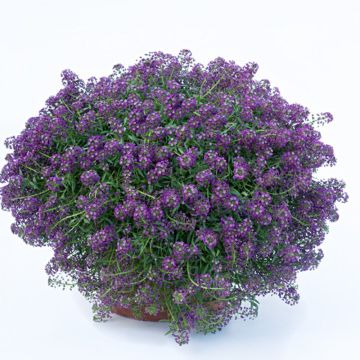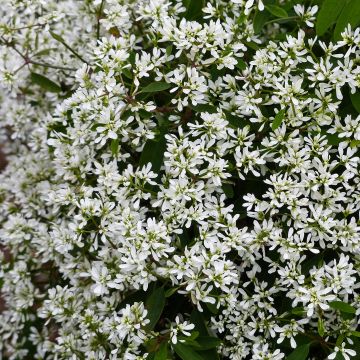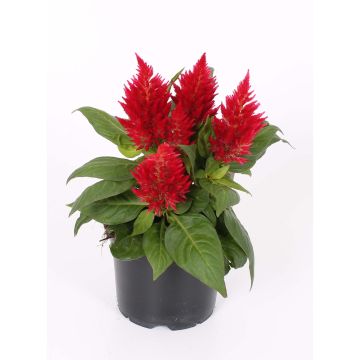

Tropaeolum Baby Rose - Nasturtium


Tropaeolum Baby Rose - Nasturtium
Tropaeolum Baby Rose - Nasturtium
Tropaeolum minus Baby Rose
Garden Nasturtium, Dwarf Nasturtium
This item cannot be shipped to the selected country
Delivery charge from €6.90
Delivery charge from €6.90
More information
Delivery charge from €6.90
Delivery charge from €6.90
More information
Schedule delivery date,
and select date in basket
This plant carries a 6 months recovery warranty
More information
We guarantee the quality of our plants for a full growing cycle, and will replace at our expense any plant that fails to recover under normal climatic and planting conditions.
From €7.90 for pickup delivery and €6.90 for home delivery
Express home delivery from €8.90.
From €7.90 for pickup delivery and €6.90 for home delivery
Express home delivery from €8.90.
Does this plant fit my garden?
Set up your Plantfit profile →
Description
The Tropaeolum minus 'Baby Rose' is a new variety of dwarf nasturtium that will make a splash in flower pots, hanging baskets, and flower borders. This generous little plant forms a dense, well-groomed cushion, adorned with vibrant pink-red flowers that shine against its dark green foliage. Not very hardy, this adorable little nasturtium is grown as an annual in our climates, in full sun and in ordinary but moist soil. 'Baby Rose', excellent in every way, has received the gold medal from Fleuroselect for 2020.
The dwarf nasturtium, in Latin Tropaeolum minus, is a tender perennial plant endemic to the mountainous regions of Ecuador and Peru. It belongs to the Tropaeolaceae family, just like its close relative, the garden nasturtium or large nasturtium Tropaeolum majus. It has given rise to many varieties, including 'Baby Rose', a cultivar recently selected in Japan by the Takii company. The plant forms a small bushy clump of 25-30 cm (10-12in) in height and 30-35 cm (12-14in) in width in one season. It blooms from June to September-October, producing numerous small tubular flowers with 5 petals, intense magenta pink in colour with white reverses, sometimes lightly speckled or edged with white, and equipped with a spur. In our climates, it is mainly bumblebees that pollinate this plant. The flowering is followed by the formation of fruits containing seeds slightly smaller than peas, which are easy to sow. The foliage is composed of small round, peltate leaves with radiating veins, of a dark glaucous green.
Plant this Baby Rose nasturtium in borders, rockeries, flower pots, or even in hanging baskets, and you will surprise your visitors. Its combination with intense blue lobelias Hot Water Blue and Diamond Frost euphorbia, or even Pennisetum x advena Rubrum fountain grass, will create a sensation in a large planter. In the vegetable garden and orchard, it will help you eliminate pests harmful to your other crops while bringing a lot of freshness and cheerfulness to its humble companions. Nasturtium finds its way into the kitchen, where its leaves and flowers can be added raw to salads, sauces, and mayonnaise. They have a spicy and aromatic flavor reminiscent of watercress. Flower buds and young fruits are sometimes preserved in vinegar, providing a substitute for capers.
The nasturtium gets its vernacular name from the spur that its flowers possess, resembling the hood of a Capuchin friar's habit. It is a medicinal and aromatic plant.
Note: Please be aware that our young plug plants are professional products reserved for experienced gardeners. Upon receipt, transplant them as soon as possible, either in flower pots, containers, or directly in flower beds.
Flowering
Foliage
Plant habit
Botanical data
Tropaeolum
minus
Baby Rose
Tropaeolaceae
Garden Nasturtium, Dwarf Nasturtium
Cultivar or hybrid
Other Nasturtium
Planting and care
First, grow your young nasturtium plants in buckets kept frost-free, in full light.
When the nasturtium plants are sufficiently developed, proceed with transplantation outdoors in open ground or in their final container filled with good horticultural soil. This operation will be carried out after the last frosts. Nasturtiums are not demanding but appreciate a fresh, well-drained soil in full sun or partial shade. Regularly apply fertilizer for flowering plants to your cultivated nasturtiums in pots. They are frequently prey to aphids and cabbage white butterflies.
Planting period
Intended location
Care
Plug plants - Annuals
Haven't found what you were looking for?
Hardiness is the lowest winter temperature a plant can endure without suffering serious damage or even dying. However, hardiness is affected by location (a sheltered area, such as a patio), protection (winter cover) and soil type (hardiness is improved by well-drained soil).

Photo Sharing Terms & Conditions
In order to encourage gardeners to interact and share their experiences, Promesse de fleurs offers various media enabling content to be uploaded onto its Site - in particular via the ‘Photo sharing’ module.
The User agrees to refrain from:
- Posting any content that is illegal, prejudicial, insulting, racist, inciteful to hatred, revisionist, contrary to public decency, that infringes on privacy or on the privacy rights of third parties, in particular the publicity rights of persons and goods, intellectual property rights, or the right to privacy.
- Submitting content on behalf of a third party;
- Impersonate the identity of a third party and/or publish any personal information about a third party;
In general, the User undertakes to refrain from any unethical behaviour.
All Content (in particular text, comments, files, images, photos, videos, creative works, etc.), which may be subject to property or intellectual property rights, image or other private rights, shall remain the property of the User, subject to the limited rights granted by the terms of the licence granted by Promesse de fleurs as stated below. Users are at liberty to publish or not to publish such Content on the Site, notably via the ‘Photo Sharing’ facility, and accept that this Content shall be made public and freely accessible, notably on the Internet.
Users further acknowledge, undertake to have ,and guarantee that they hold all necessary rights and permissions to publish such material on the Site, in particular with regard to the legislation in force pertaining to any privacy, property, intellectual property, image, or contractual rights, or rights of any other nature. By publishing such Content on the Site, Users acknowledge accepting full liability as publishers of the Content within the meaning of the law, and grant Promesse de fleurs, free of charge, an inclusive, worldwide licence for the said Content for the entire duration of its publication, including all reproduction, representation, up/downloading, displaying, performing, transmission, and storage rights.
Users also grant permission for their name to be linked to the Content and accept that this link may not always be made available.
By engaging in posting material, Users consent to their Content becoming automatically accessible on the Internet, in particular on other sites and/or blogs and/or web pages of the Promesse de fleurs site, including in particular social pages and the Promesse de fleurs catalogue.
Users may secure the removal of entrusted content free of charge by issuing a simple request via our contact form.














































